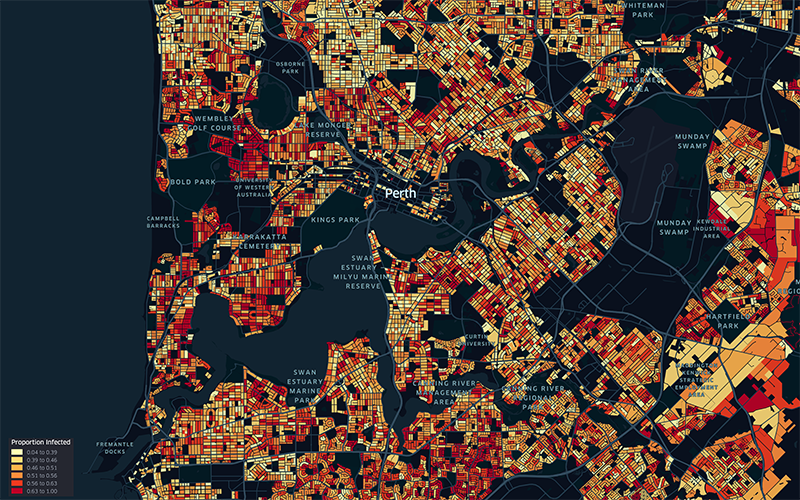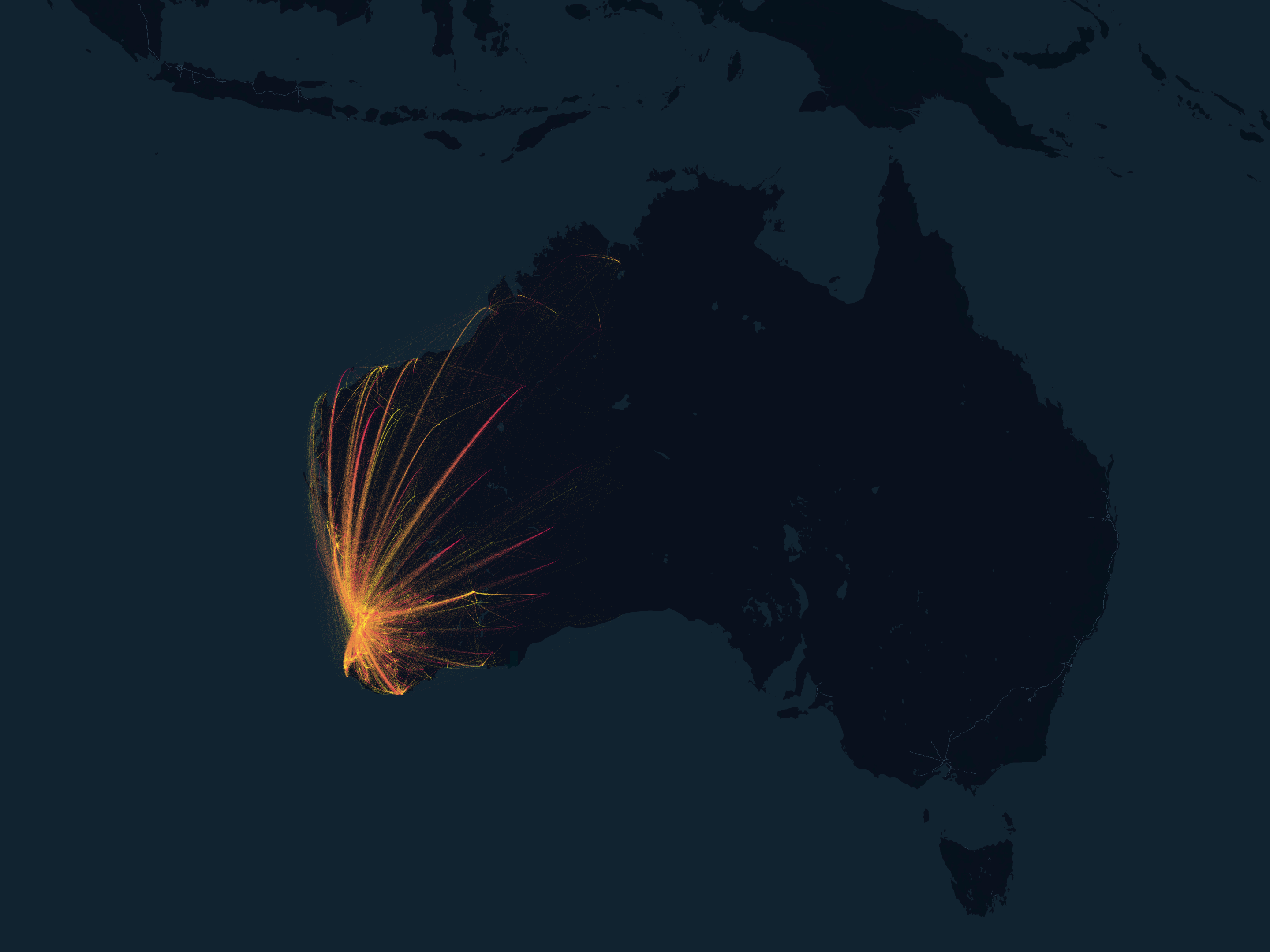Search

Our Child Health Analytics Team uses cutting-edge technologies to better understand how and why the health and wellbeing of children varies from place to place. We develop innovative geospatial methods that can harness large, complex datasets to pinpoint hotspots of elevated risk, evaluate change through time, and explore underlying drivers.


News & Events
Sophisticated new modelling suggests keeping mask mandate could prevent 147,000 COVID-19 casesWA’s current Omicron COVID-19 outbreak could jump by 147,000 cases if mask mandates are abandoned before the Easter long weekend, according to sophisticated new modelling.

News & Events
New study identifies African ‘hotspot’ for highly infectious diseasesA regional corner of Africa is a hotspot for cases of HIV, tuberculosis and malaria, prompting researchers to call for targeted health support rather than a national response.

Research
Modelling the COVID pandemic with the Geographical COVID-19 Model (GEO-COV)Researchers have developed a new model for simulating covid-19 outbreaks in Western Australia.
Research
Geospatial joint modeling of vector and parasite serology to microstratify malaria transmissionThe World Health Organization identifies a strong surveillance system for malaria and its mosquito vector as an essential pillar of the malaria elimination agenda. Anopheles salivary antibodies are emerging biomarkers of exposure to mosquito bites that potentially overcome sensitivity and logistical constraints of traditional entomological surveys.
Research
WALLABY Pre-Pilot Survey: The effects of angular momentum and environment on the H i gas and star formation properties of galaxies in the Eridanus supergroupWe use high-resolution ASKAP observations of galaxies in the Eridanus supergroup to study their H i, angular momentum, and star formation properties, as part of the WALLABY pre-pilot survey efforts.
Research
Transfluthrin eave-positioned targeted insecticide (EPTI) reduces human landing rate (HLR) of pyrethroid resistant and susceptible malaria vectors in a semi-field simulated peridomestic spaceVolatile pyrethroids (VPs) are proven to reduce human-vector contact for mosquito vectors. With increasing resistance to pyrethroids in mosquitoes, the efficacy of VPs, such as transfluthrin, may be compromised. Therefore, experiments were conducted to determine if the efficacy of transfluthrin eave-positioned targeted insecticide depends on the resistance status of malaria vectors.
Research
The prevalence of tuberculosis and malaria in minority indigenous populations of South- East Asia and the Western Pacific Region: a systematic review and meta-analysisInfectious diseases have been shown to disproportionately affect indigenous populations. Tuberculosis (TB) and malaria continue to impose a significant burden on humanity and are among the infectious diseases targeted within the 2030 Agenda for Sustainable Development.
Research
Inequalities in excess premature mortality in England during the COVID-19 pandemic: A cross-sectional analysis of cumulative excess mortality by area deprivation and ethnicityTo examine magnitude of the impact of the COVID-19 pandemic on inequalities in premature mortality in England by deprivation and ethnicity.
